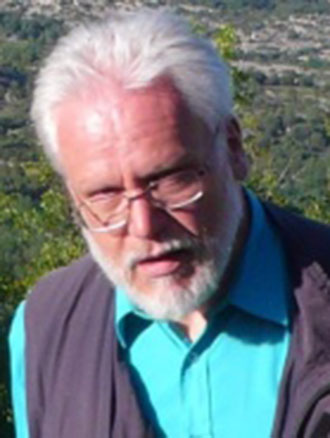June
How our early ancestors turned disability into advantage

A new evolutionary theory explains how critically small populations of early humans survived, despite an increased chance of hereditary disabilities being passed to offspring.
Anthropologists at Newcastle University and the University of York have studied how our earliest ancestors coped during periods when the population dwindled, and have developed a model of early hominins as ‘Vulnerable Apes’.
Small numbers of individuals in the distant past would sometimes be driven to landscapes that allowed them to avoid predators and competitors, or exploit emergency resources. They would have become isolated, creating genetic ‘bottlenecks’ which brought disabling genes to the surface.
The researchers argue that these groups would have experienced a new type of selection pressure – not selection in favour of individuals with the ‘best’ genes but selection that favoured those who were able to cope with the challenges that their genes threw at them.
They speculate that our need to socialise and ability to experiment and learn new behaviours, as well as our compassion and communication skills, arose as coping strategies that allowed our ancestors to get through these bottlenecks. In so doing, they turned ‘disabilities’ such as weak jaws, hairless bodies, short, weak arms and straight feet that can't climb trees, into opportunities that formed the platform for future human evolution.
Dr Nick Winder, pictured, from the School of Arts and Cultures, explains: “This is a new way of thinking about ‘fitness’. It wasn’t just a matter of having good genes yourself because half your offspring’s genes come from someone else. The pool of potential mates would be small and individuals would have to accept the genes on offer or fail to reproduce at all. On some occasions there would be matings between close kin, on others, there would be matings across species boundaries.
“In situations where the probability of producing disabled offspring was high, the ‘fittest’ individuals would be those that could help their offspring co-exist with this vulnerability. Those that were a little smarter, more flexible, and more compassionate would have been at an advantage.”
The researchers suggest that human and non-human primate lineages may have diverged and re-converged many times, and that the conventional ‘inverted tree’ model of evolution should be replaced with a network of diverging and re-crossing gene-streams.
Dr Isabelle Winder, from the Department of Archaeology at York, says that this work may change the way anthropologists interpret DNA evidence: “The network pattern of evolution, which has parallels in other groups of animals and plants, has profound implications for DNA studies in anthropology.
“Molecular biologists usually interpret genetic data by assuming a diverging hierarchy and statistically large populations. That may work for bacteria and fruitflies, but the anthropological evidence doesn’t line up. Hominin populations were small and lineages seem to have diverged and re-converged in a way that could cause molecular ‘clocks’ to speed up, slow down and even run backwards.”
The study, published in the journal Internet Archaeology, challenges the ‘Modern Synthesis’ of evolutionary biology which doesn’t take hybridisation into account and assumes that populations diverge into reproductively isolated units to create a hierarchy of ever-diverging lineages.
The father and daughter research team is critical of the assumption that the survivors within those populations will be genetically superior to those that disappear, and point to examples of disabled individuals in the archaeological record that could not have survived without communal assistance.
Isabelle says: “Like many other scientists, we believe anthropologists need an ‘Extended Synthesis’ able to accommodate situations where lineages re-converge, disabling genes may be flushed out of hiding and organisms are capable of social learning that they then turn to their advantage. Our ‘Vulnerable Ape’ hypothesis could be part of that Extended Synthesis.
“Genetic vulnerability was the trigger that set our ancestors on the path to symbolic language, innovation and pro-social co-operation.”
Nick adds: “The reason every new fossil or DNA study seems to force a rethink of human evolution is that biologists are committed to a divergent, hierarchical model, with fierce competition between individual members of large populations.
“The new evidence tends to be much less baffling if you accept that ancient populations were often small and that early hominins had even more complicated sex-lives than our own.
“The traditional competitive model encourages us to think of the relatively high incidence of genetic disability in our species as a threat, but the anthropological evidence suggests that the incidence of genetic disability was probably much higher in the distant past. We have good reason to believe that compassion, ingenuity and behavioural flexibility helped our ancestors cope with this vulnerability.”
Nick believes the Vulnerable Ape hypothesis may have implications for the way we cope with threats we face today, such as climate change: “Our earliest ancestors were coping with environmental challenges that drove them through a succession of genetic bottlenecks. Over the last few thousand years, however, innovation has become such a significant driver of evolutionary change in our species that it has entrained planetary life-support systems. We don’t yet know how the cognitive skills acquired in tiny communities and refuge-landscapes will serve us on a planet that has few refuge-landscapes left. ”
The research is published in Internet Archaeology as Winder, N.P. and Winder I.C. (2015). Complexity, Compassion and Self-Organisation: Human Evolution and the Vulnerable Ape Hypothesis, Internet Archaeology 40. http://dx.doi.org/10.11141/ia.40.3
published on: 12 June 2015
